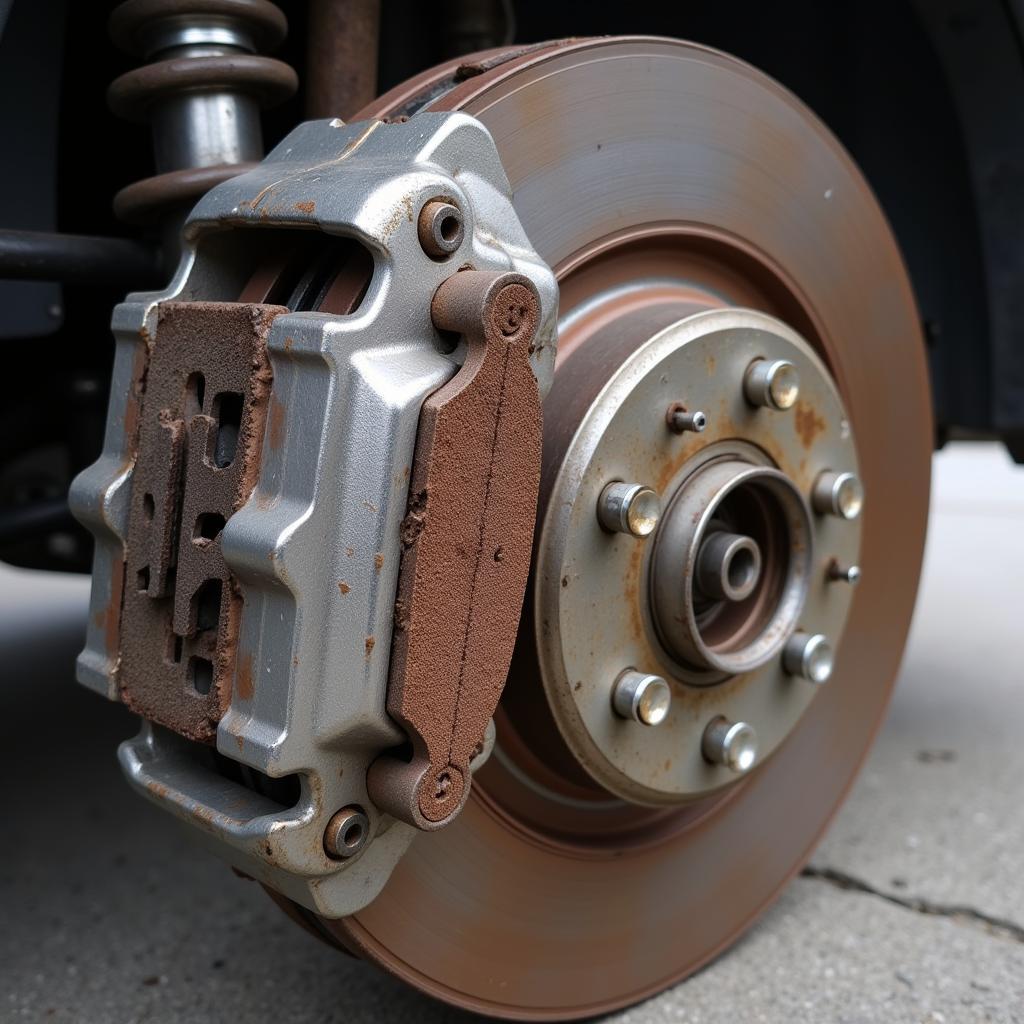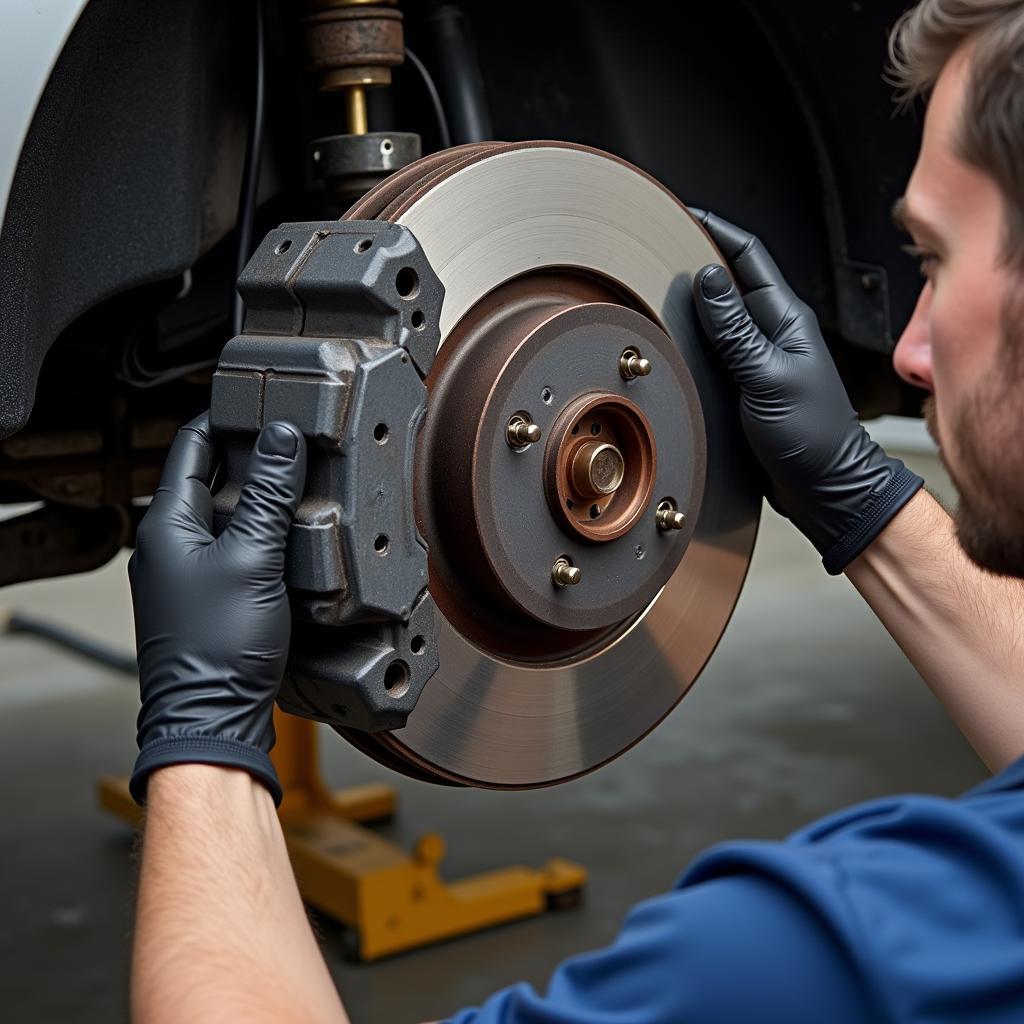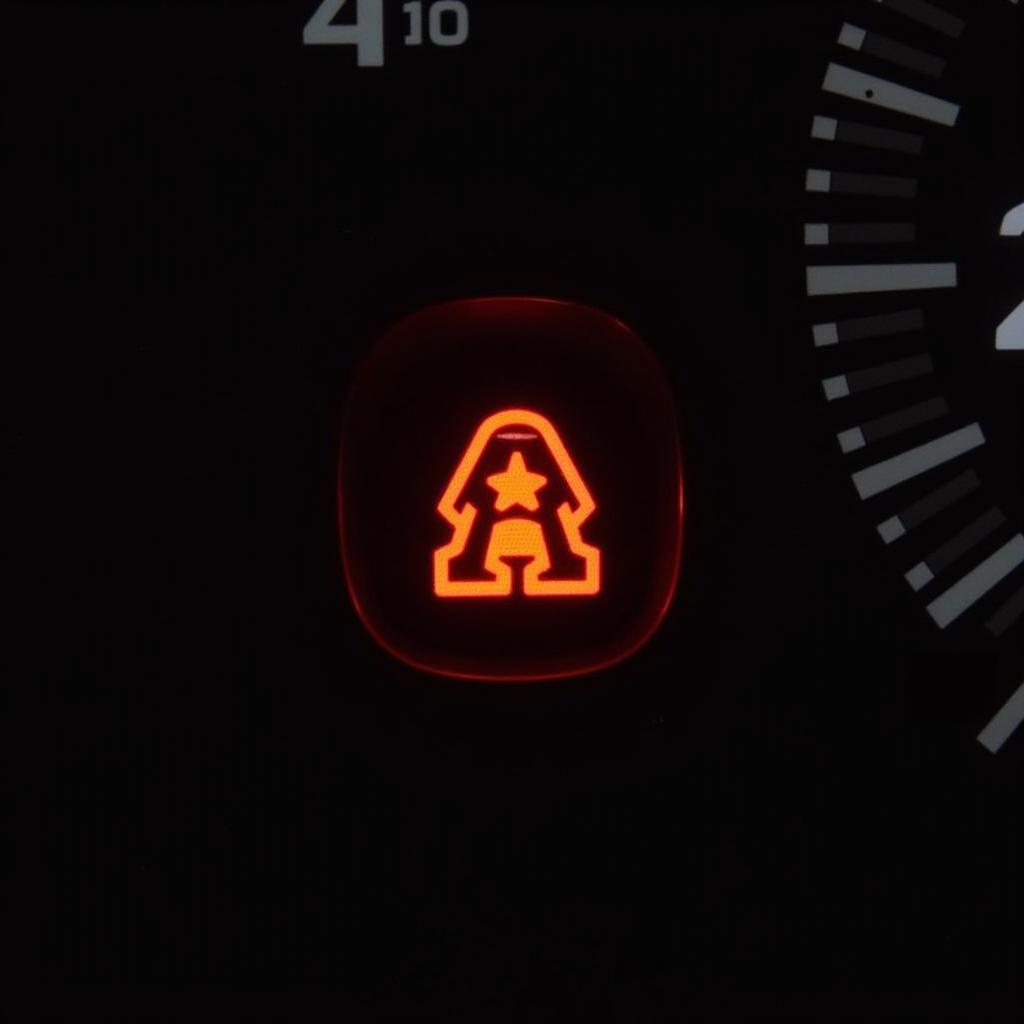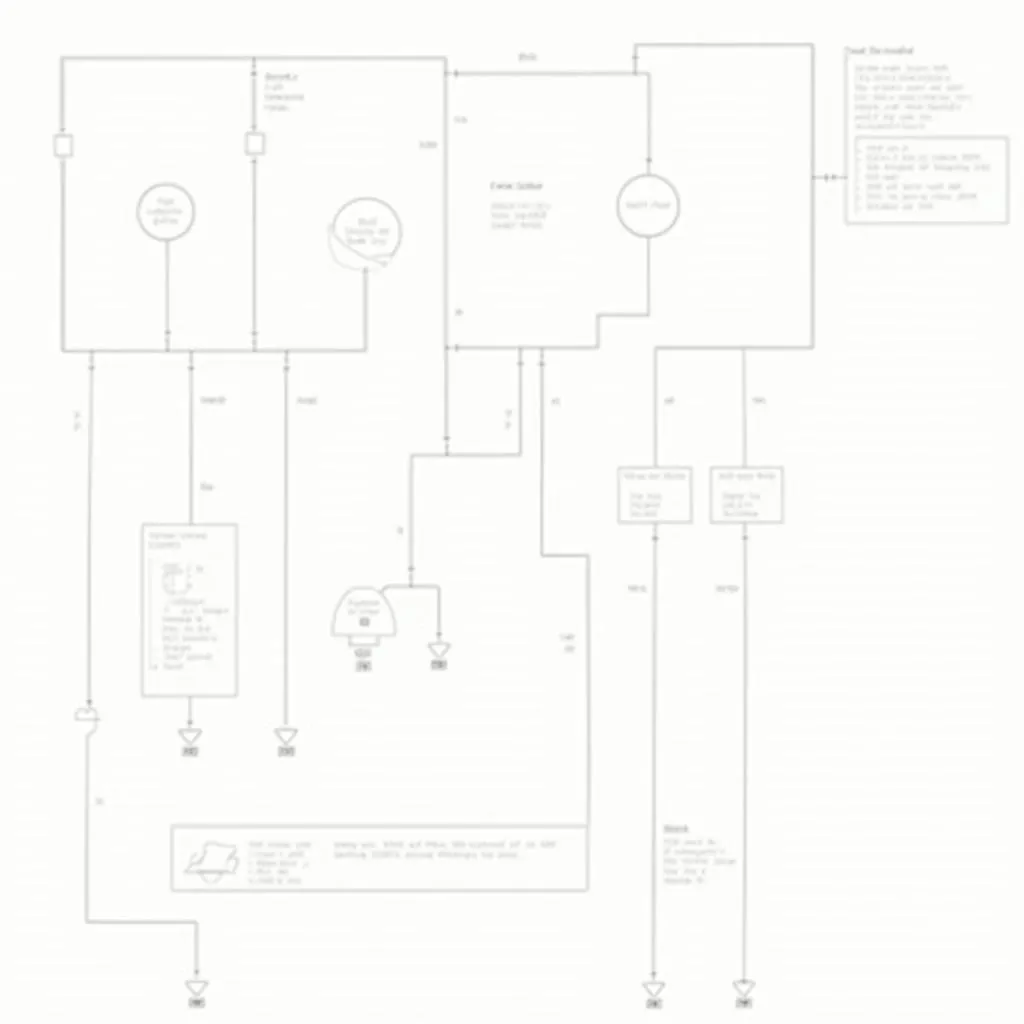You hear a strange new noise coming from your car and immediately think the worst. As you cautiously pull over to the side of the road, your mind starts racing. Is it a flat tire? Engine trouble? After a quick visual inspection, you spot it – a small metal clip, seemingly out of place, resting against your brake rotor. This, my friend, is the infamous brake pad wear indicator, and it’s signaling it’s time for a brake job.
The Small but Mighty Brake Pad Wear Indicator
While it might seem insignificant, this tiny metal tab plays a crucial role in your car’s safety and your peace of mind. Here’s the breakdown:
- How it Works: This small metal tab is intentionally designed to be slightly longer than your brake pads. As you use your brakes over time, the brake pad material wears down. Eventually, the pad material wears down enough that the metal indicator comes into direct contact with your brake rotor.
- The Telltale Sound: When the metal indicator rubs against the rotor, it creates a high-pitched squealing or screeching sound. This is your audible cue that your brake pads have reached the end of their lifespan and need to be replaced.
- Why You Shouldn’t Ignore It: Ignoring this warning sign can lead to more than just an annoying noise. Driving with worn-out brake pads can result in:
- Reduced Braking Efficiency: Worn pads take longer to stop your vehicle, increasing your stopping distance and the risk of an accident.
- Damage to Rotors: Driving with metal-on-metal contact will score and damage your brake rotors, leading to costly repairs.
- Complete Brake Failure: In extreme cases, ignoring worn brake pads can lead to complete brake failure, putting you and others on the road in danger.
 Worn Brake Pad Indicator
Worn Brake Pad Indicator
What to Do When the Warning Clip Sounds the Alarm
Hearing the brake pad wear indicator is your cue to schedule a brake inspection with a qualified mechanic as soon as possible. Here’s what to expect:
- Inspection: A mechanic will inspect your brake system, including the pads, rotors, calipers, and brake fluid, to assess the extent of the wear and tear.
- Brake Pad Replacement: If the inspection reveals that your brake pads are indeed worn down, they will need to be replaced. This is a routine maintenance procedure that involves removing the old pads and installing new ones.
- Rotor Resurfacing or Replacement: If the rotors are scored or damaged, the mechanic may be able to resurface them to restore a smooth surface. However, if the damage is too severe, they will need to be replaced.
- Brake Fluid Flush: While not always necessary at every brake pad replacement, it’s generally recommended to have your brake fluid flushed and replaced every couple of years to maintain optimal braking performance.
 Brake Pad Replacement
Brake Pad Replacement
Expert Insight from a Veteran Mechanic
“I’ve seen countless cases where drivers ignore the warning signs of worn brake pads,” says John Smith, a seasoned automotive technician with over 20 years of experience. “What starts as a simple brake pad replacement can quickly escalate into a much more expensive repair if ignored. It’s always best to address brake issues sooner rather than later.”
Don’t Hit the Brakes on Safety
Remember, your car’s braking system is one of its most critical safety features. That little warning clip on your brake pads is there to protect you and others on the road. Don’t ignore it! Address brake issues promptly to ensure your vehicle is in top-notch condition and you can drive with confidence.


